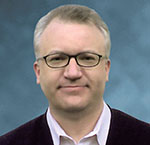Bill Siwicki
“We have doubled the number of patients seen on a daily basis because of the telehealth capabilities,” said Central Kansas Mental Health Center’s IT director.
The Arc Madison Cortland is using virtual care to connect intellectual/developmental disability patients with providers who understand the nuances of that dual diagnosis.
Whole Life Health Care uses the vendor’s Success Community platform to get best practices on technology and pandemic care to meet the excessive demands of the COVID-19 era.
Nevada is No. 51 in the nation for providing behavioral health services. Spurred by COVID-19 and using FCC telemedicine funds, Bridge Counseling is working to change that.
The government grant will help strengthen Parker Jewish Institute for Health Care and Rehabilitation’s resources with more laptops, mobile devices and remote patient monitoring strategies so doctors can monitor patients from anywhere.
That was just one discovery made by MEBS Counseling when COVID-19 accelerated its plans to add telemedicine. Today it’s seeing close to its normal volume of patients with telehealth alone.
With new reminder texts in place, the Universal Community Health Center had a drop in no-shows between 5-7% and saw a decrease in empty slots of about 10%.
The health system, which focuses on underserved patients, has boosted its clinical quality measures with telehealth, too.
From March 23 through July 20, Florida’s Millennium Physician Group has performed more than 90,000 telemedicine encounters – more than 30% of its total visits.
And Rush University Medical Center’s digital tools reduced the strain of avoidable readmissions and ED recidivism when resources already were at capacity.
